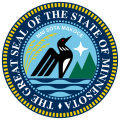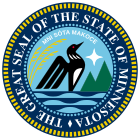
The Minnesota Democratic–Farmer–Labor Party (DFL) is a political party in the U.S. state of Minnesota. The party was formed by a merger between the Minnesota Democratic Party and the Minnesota Farmer–Labor Party in 1944. The DFL is one of two state Democratic Party affiliates with a different name from that of the national party, the other being the North Dakota Democratic–Nonpartisan League Party.
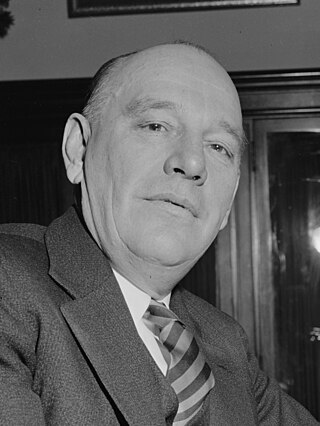
Ernest Lundeen was an American lawyer and politician who represented Minnesota in the United States House of Representatives from 1917 to 1919 and 1933 to 1937 and the United States Senate from 1937 until his death in 1940. He was a member of the Republican Party before joining the Minnesota Farmer–Labor Party, and he opposed American involvement in World War I and World War II. He was also affiliated with the Nazi Party of Germany.

The Minnesota Farmer–Labor Party (FLP) was a left-wing American political party in Minnesota between 1918 and 1944. The FLP largely dominated Minnesota politics during the Great Depression. It was one of the most successful statewide third party movements in United States history and the longest-lasting affiliate of the national Farmer–Labor movement. At its height in the 1920s and 1930s, FLP members included three Minnesota governors, four United States senators, eight United States representatives and a majority in the Minnesota legislature.

The Republican Party of Minnesota is the state affiliate of the Republican Party in Minnesota and the oldest active political party in the state. Founded in 1855, the party controls four of Minnesota's eight congressional House seats. The last Republican governor of the state was Tim Pawlenty, who served from 2003 to 2011.
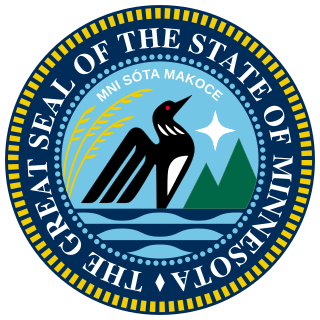
The Minnesota Legislature is the bicameral legislature of the U.S. state of Minnesota consisting of two houses: the Senate and the House of Representatives. Senators are elected from 67 single-member districts. In order to account for decennial redistricting, members run for one two-year term and two four-year terms each decade. They are elected for four-year terms in years ending in 2 and 6, and for two-year terms in years ending in 0. Representatives are elected for two-year terms from 134 single-member districts formed by dividing the 67 senate districts in half.

The lieutenant governor of Minnesota is a constitutional officer in the executive branch of the U.S. state of Minnesota. Fifty individuals have held the office of lieutenant governor since statehood. The incumbent is Peggy Flanagan, a DFLer and the first Native American elected to a statewide executive office in Minnesota's history.
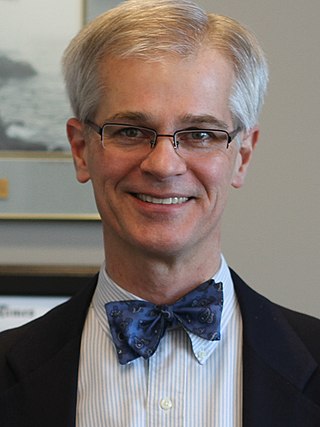
John J. Marty is a member of the Minnesota Senate, representing District 40, which includes parts of Ramsey County in the northern Twin Cities metropolitan area. As a young state senator, he ran for governor of Minnesota in 1994. He won the DFL nomination and the Democratic primary but lost the general election to the incumbent governor, Arne Carlson. Marty ran for governor again in 2010, but withdrew from the race after failing to win his party's endorsement.

Minnesota is known for a politically active citizenry, with populism being a longstanding force among the state's political parties. Minnesota has consistently high voter turnout; in the 2008 U.S. presidential election, 77.8% of eligible Minnesotans voted – the highest percentage of any U.S. state or territory – versus the national average of 61.7%. This was due in part to its same day voter registration laws; previously unregistered voters can register on election day, at their polls, with evidence of residency.
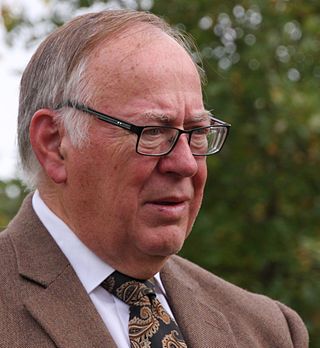
David Howard Senjem is an American politician currently serving on the Olmsted County Board of Commissioners. He is a former member of the Minnesota Senate, serving in that body from 2003 to 2023. He led the Republican caucus as majority leader from 2011 to 2013. A moderate Republican, Senjem has crossed party lines on many occasions, notably environmental policy and women's issues. He represented District 25, which at the time included portions of Dodge and Olmsted counties in the southeastern part of the state. Much of the northern half of Rochester was in his district.

David Joseph Tomassoni was an American politician who served in the Minnesota Legislature from 1993 to 2022. A former member of the Minnesota Democratic–Farmer–Labor Party (DFL), Tomassoni left the party to become independent in November 2020 and joined the Minnesota Senate Republican Caucus.
Lyle J. Koenen is a Minnesota politician and former member of the Minnesota Senate. A member of the Minnesota Democratic–Farmer–Labor Party (DFL), he represented District 17, which included portions of Chippewa, Kandiyohi, Renville, and Swift counties in the southwestern part of the state.

Leon Michael Lillie is an American politician serving in the Minnesota House of Representatives since 2005. A member of the Minnesota Democratic–Farmer–Labor Party (DFL), Lillie represents District 44B in the Twin Cities metropolitan area, which includes the cities of Oakdale, North St. Paul, and Maplewood and parts of Ramsey and Washington Counties.

Bobby Joe Champion is an American attorney and politician serving as a member of the Minnesota Senate. A member of the Minnesota Democratic–Farmer–Labor Party (DFL), he represents the 59th district, which includes portions of downtown and north Minneapolis in Hennepin County. He is the incumbent President of the Minnesota Senate.

The eighty-first Minnesota Legislature first convened on January 5, 1999. The 67 members of the Minnesota Senate were elected during the general election of November 5, 1996, and the 134 members of the Minnesota House of Representatives were elected during the general election of November 3, 1998.
The 1980 Minnesota House of Representatives election was held in the U.S. state of Minnesota on November 4, 1980, to elect members to the House of Representatives of the 72nd Minnesota Legislature. A primary election was held on September 9, 1980.

The seventieth Minnesota Legislature first convened on January 4, 1977. The 67 members of the Minnesota Senate and the 134 members of the Minnesota House of Representatives were elected during the General Election of November 2, 1976. It was the first Minnesota Legislature since the thirty-eighth Minnesota Legislature whose members of the Minnesota Senate were chosen in partisan elections.
